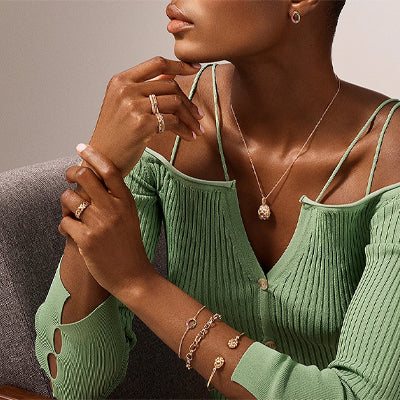Les œufs impériaux
La célèbre série de 50 œufs de Pâques impériaux a été créée pour la famille impériale russe de 1885 à 1916, lorsque l'entreprise était dirigée par Peter Carl Fabergé. Ces créations sont inextricablement liées à la gloire et au destin tragique de la dernière famille Romanov. Elles constituent l'ultime réalisation de la célèbre maison de joaillerie russe et doivent également être considérées comme les dernières grandes commandes d'objets d'art. Dix œufs ont été produits de 1885 à 1893, sous le règne de l'empereur Alexandre III ; 40 autres furent créés sous le règne de son fils dévoué, Nicolas II, deux chaque année, un pour sa mère, la douairière, le second pour son épouse.
La série a commencé en 1885 lorsque l'empereur Alexandre III, par l'intermédiaire de son oncle, le grand-duc Vladimir, commanda à Fabergé un œuf de Pâques comme cadeau de Pâques pour son épouse, l'impératrice Maria Feodorovna. Initialement prévue par Fabergé pour contenir une bague en diamant, la version finale, suivant les instructions spécifiques de l'Empereur, comprenait un pendentif en rubis de grande valeur. Après la première commande, Fabergé fut nommé « orfèvre spécialement nommé à la couronne impériale », et la légende se poursuivit au cours des 31 années suivantes. Selon la tradition de la famille Fabergé, l'entreprise disposait d'une totale liberté pour les futurs œufs de Pâques impériaux. Même l’Empereur ne savait pas quelle forme ils prendraient. La seule condition était que chacun contienne une surprise.
Les œufs impériaux
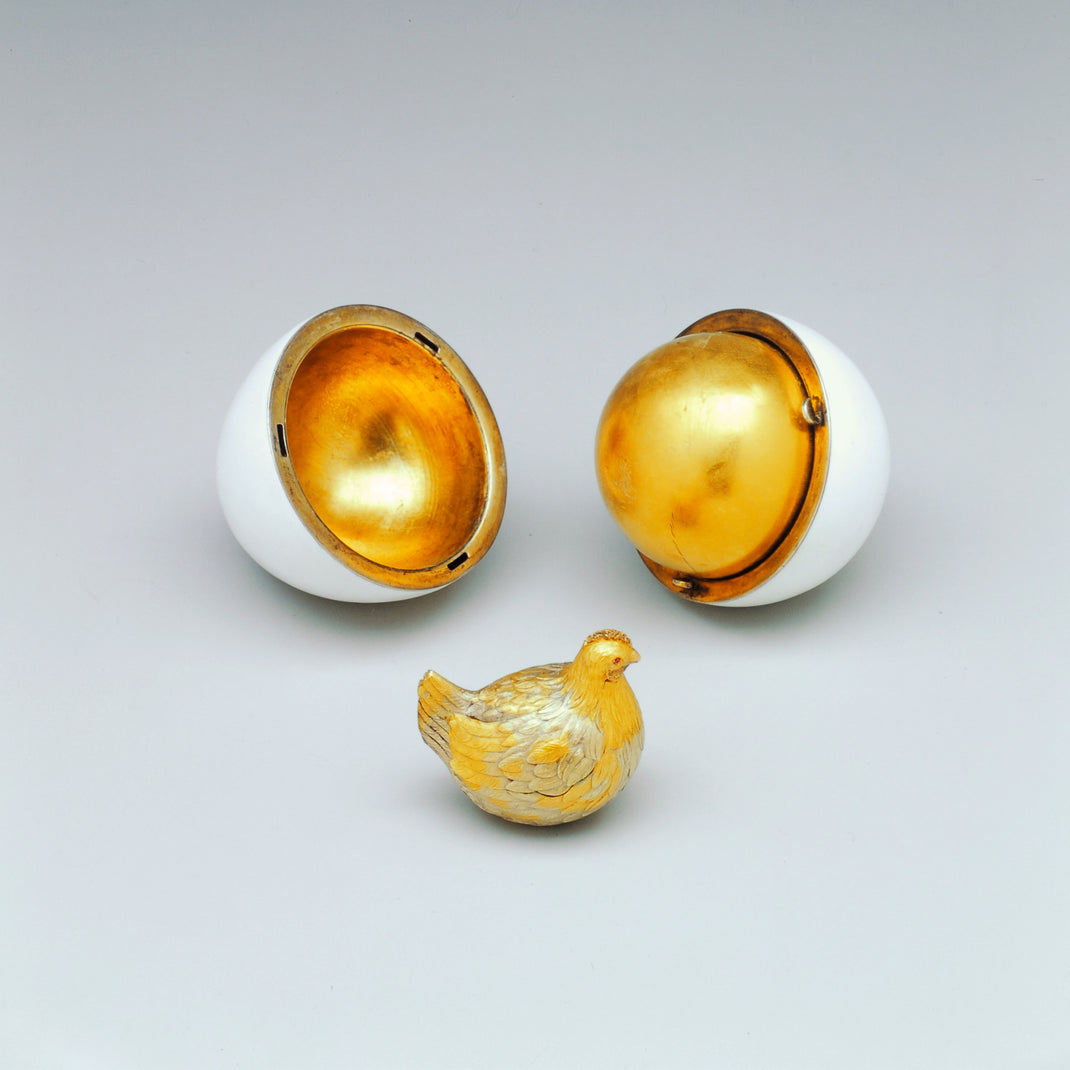
Image courtesy of the Forbes Collection
1885
The Hen Egg
Inspired by an 18th century original, the Hen Egg has an opaque white enamelled outer ‘shell’, opening with a twist to reveal a first surprise - a matt yellow gold yolk. This in turn contains an enamelled chased gold hen that once held a replica of the Imperial Crown with a precious ruby pendant egg within. The drop by itself cost more than half of the egg’s total price (both lost, being only known from an old photograph).
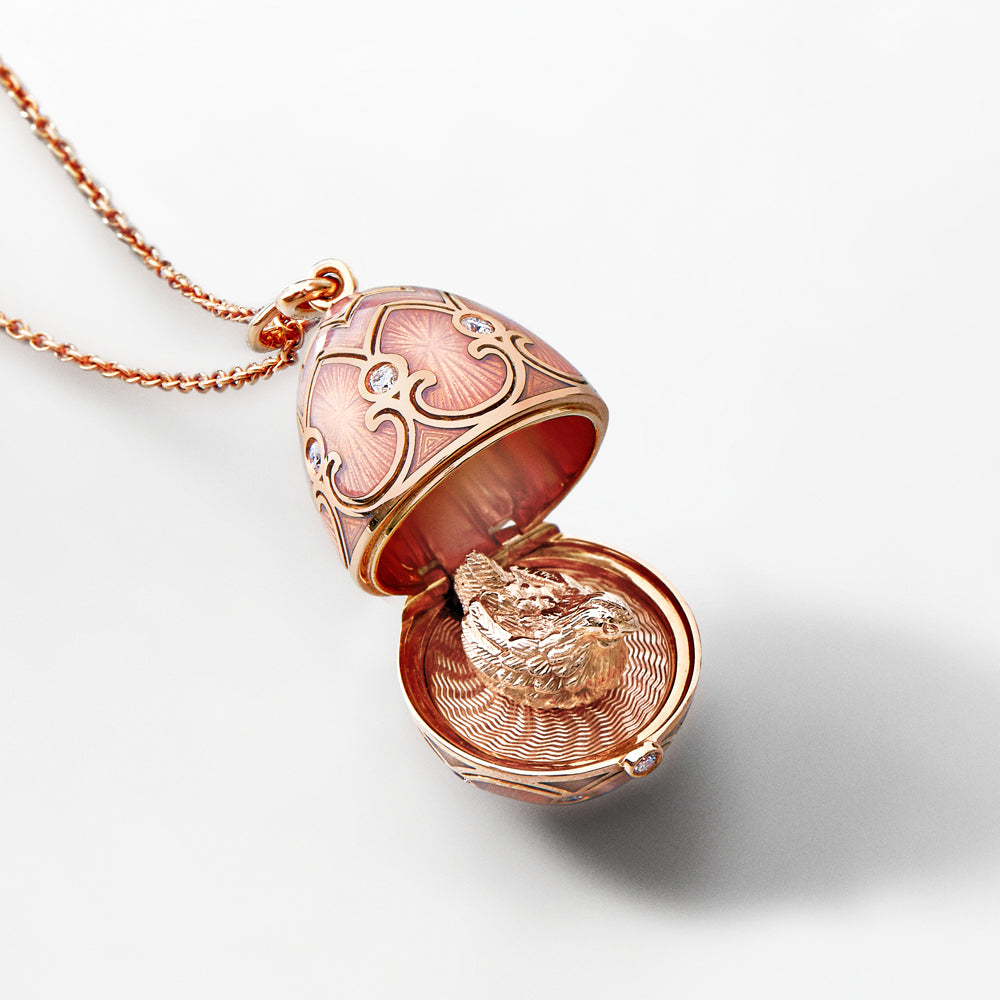
Heritage Collection
Heritage Hen Locket
The Heritage collection draws inspiration from Fabergé’s historical masterpieces. Traditional materials and complex traditional techniques, such as the delicate art of guilloché enamelling and hand-engraving, make up the signature elements of this colourful and opulent collection.
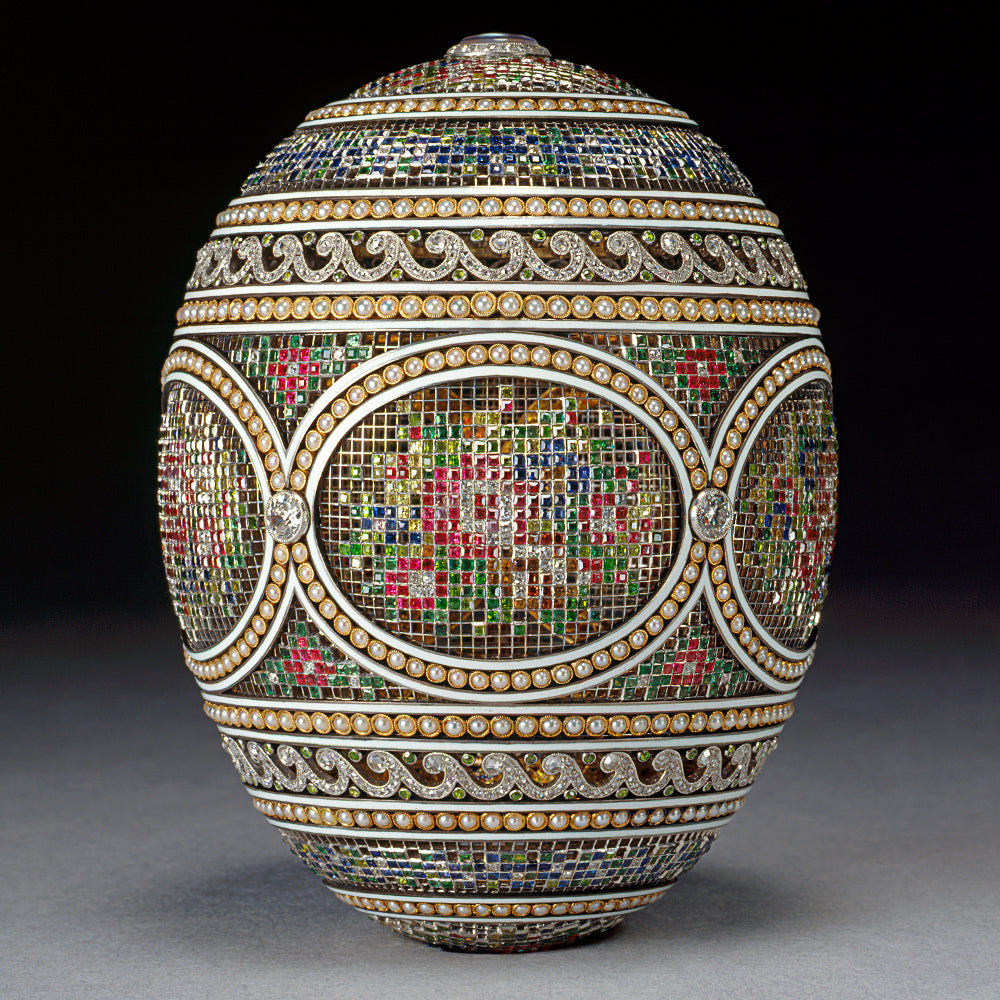
Image courtesy of the Getty Images
1914
The Mosaic Egg
The Mosaic Egg is a triumph of technical brilliance and artistic finesse. Commissioned by Tsar Nicholas II for Empress Alexandra, it features a delicate micro-mosaic of precious gems set in platinum to resemble petit point embroidery. Designed by Alma Theresia Pihl, the egg’s intricate beauty is matched by its heartfelt surprise—a miniature portrait of the imperial children—making it one of the most cherished treasures of the Imperial Fabergé collection.
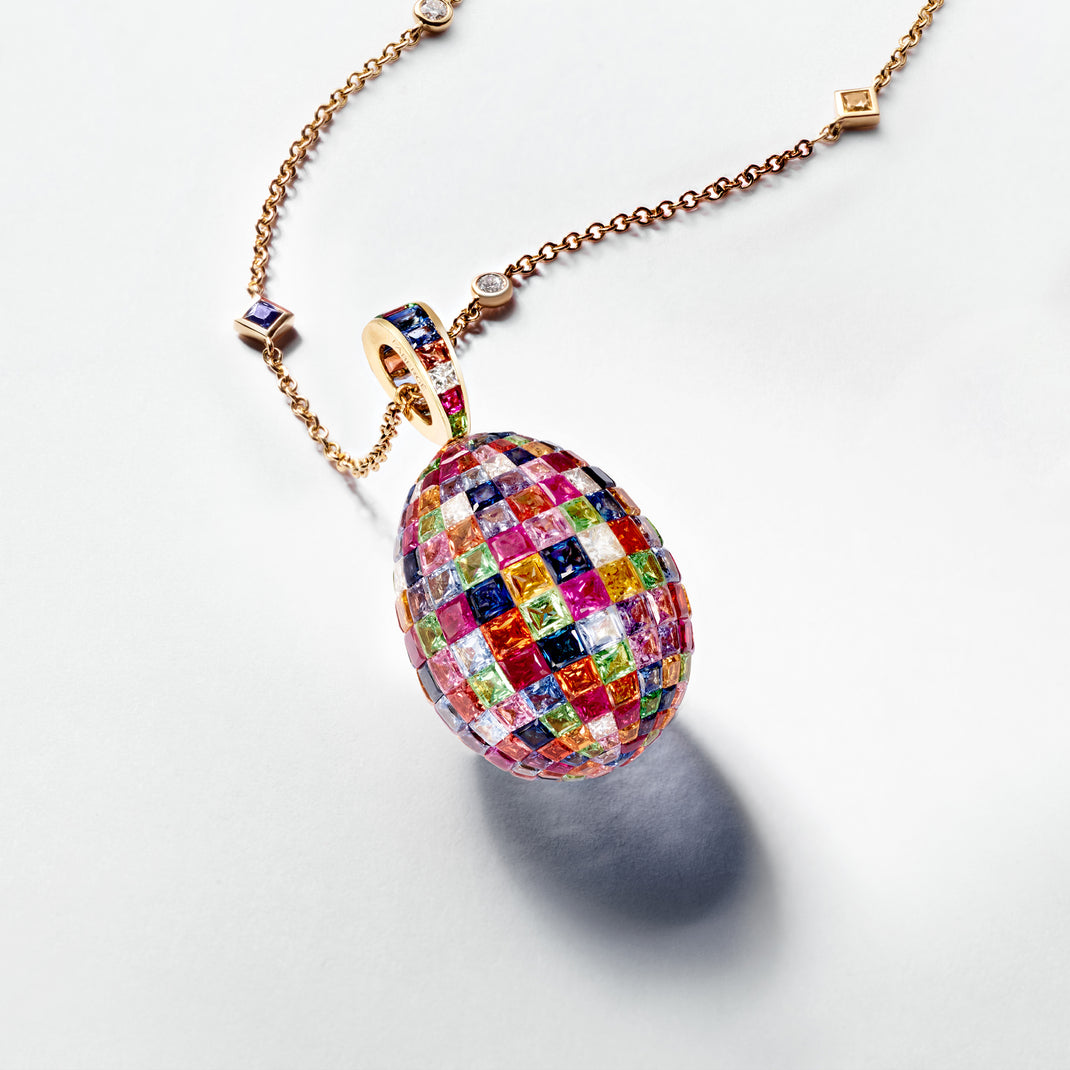
Imperial Collection
Mosaic Egg Pendant
In a compelling mix of impeccable craftsmanship and the finest gemstones, the Fabergé Imperial collection celebrates rhythms of the seasons. Exceptional white diamond, pearl and coloured gemstone pieces demonstrate the superlative Fabergé hand artisanship.
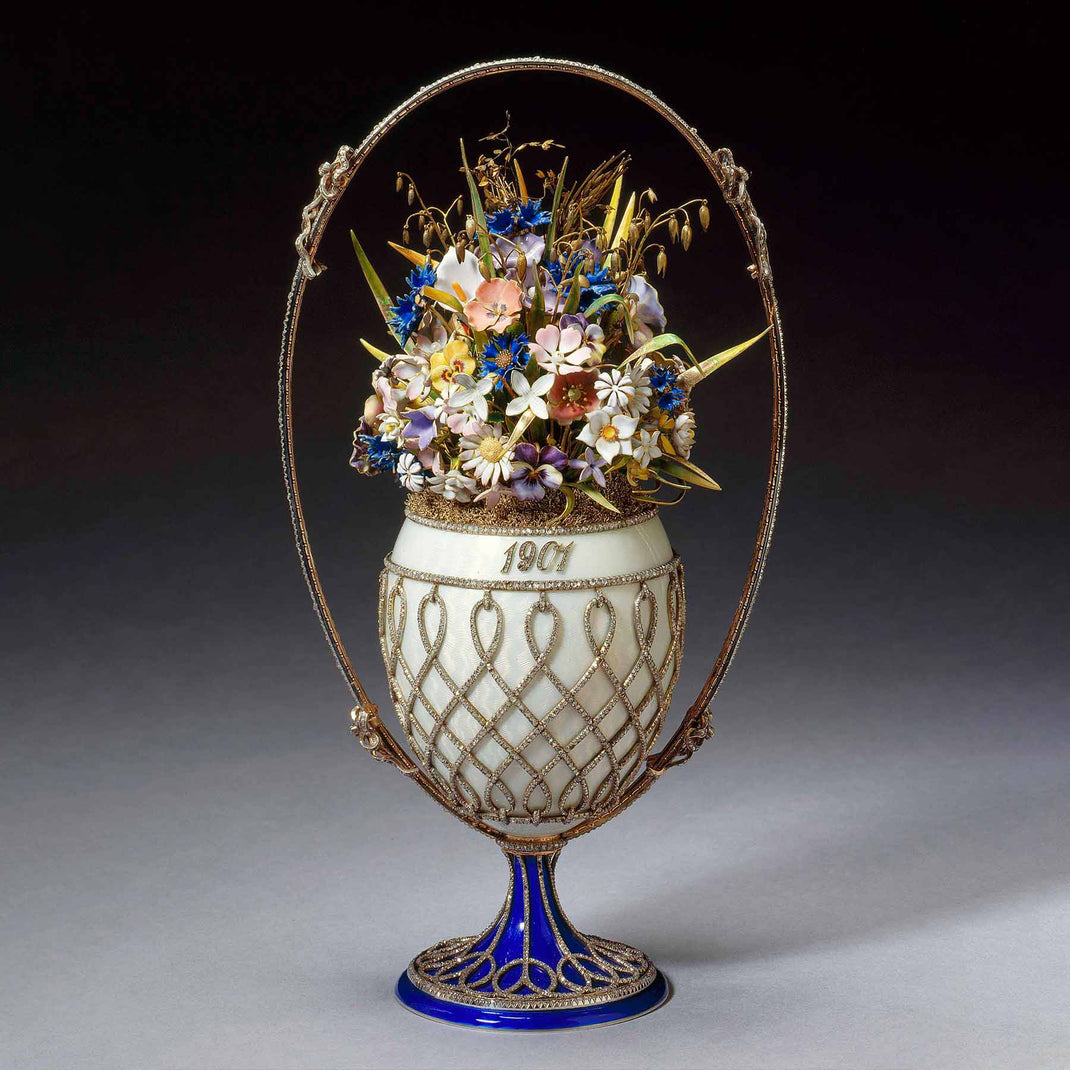
Image courtesy of The Royal Collection
1901
The Basket of Flowers Egg
Imperial Easter egg, basket-shaped, silver-gilt and oyster guilloché enamel mounted with rose diamond trellis and oval handle with four bows, blue enamel splayed base with rose diamond trellis. Egg contains wild flowers, leaves and husks of enamel on gold. The Tsarina kept the egg in her study at the Winter Palace. Each of the 50 Imperial Easter Eggs made by Fabergé was unique, its design and execution of the highest possible standard using the finest raw materials. The bouquet of wild spring flowers would have particularly appealed to Tsarina Alexandra, who owned several of Fabergé’s flower studies.
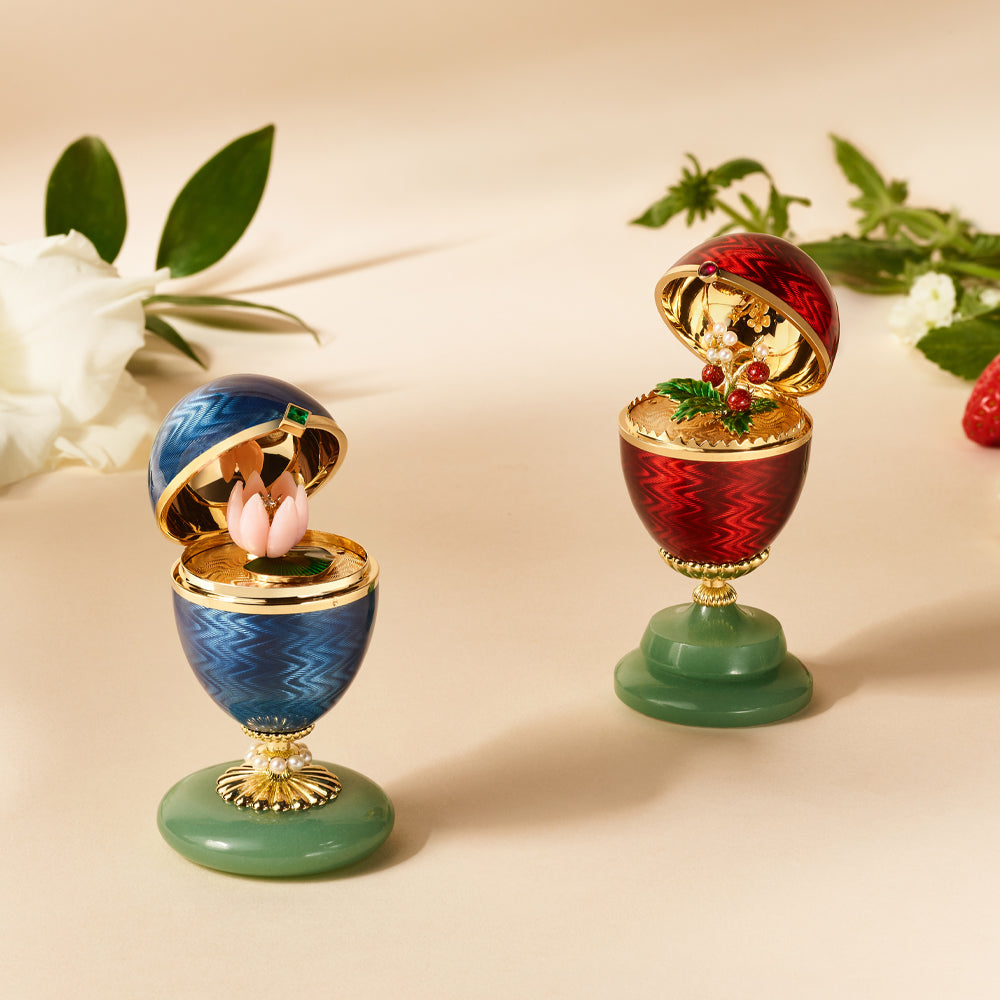
Heritage
In Bloom
Introducing two limited-edition eggs to our objet d’art collection, which pay homage to our rich heritage, fusing the iconic egg with the iconic flower studies for which Peter Carl Fabergé was renowned. The Fabergé Wild Strawberry Egg and Fabergé Water Lily Egg are each destined to become future heirlooms and - limited to just 10 numbered editions per design - are collectors’ pieces which truly celebrate the beauty of nature and the past, present, and future of Fabergé.
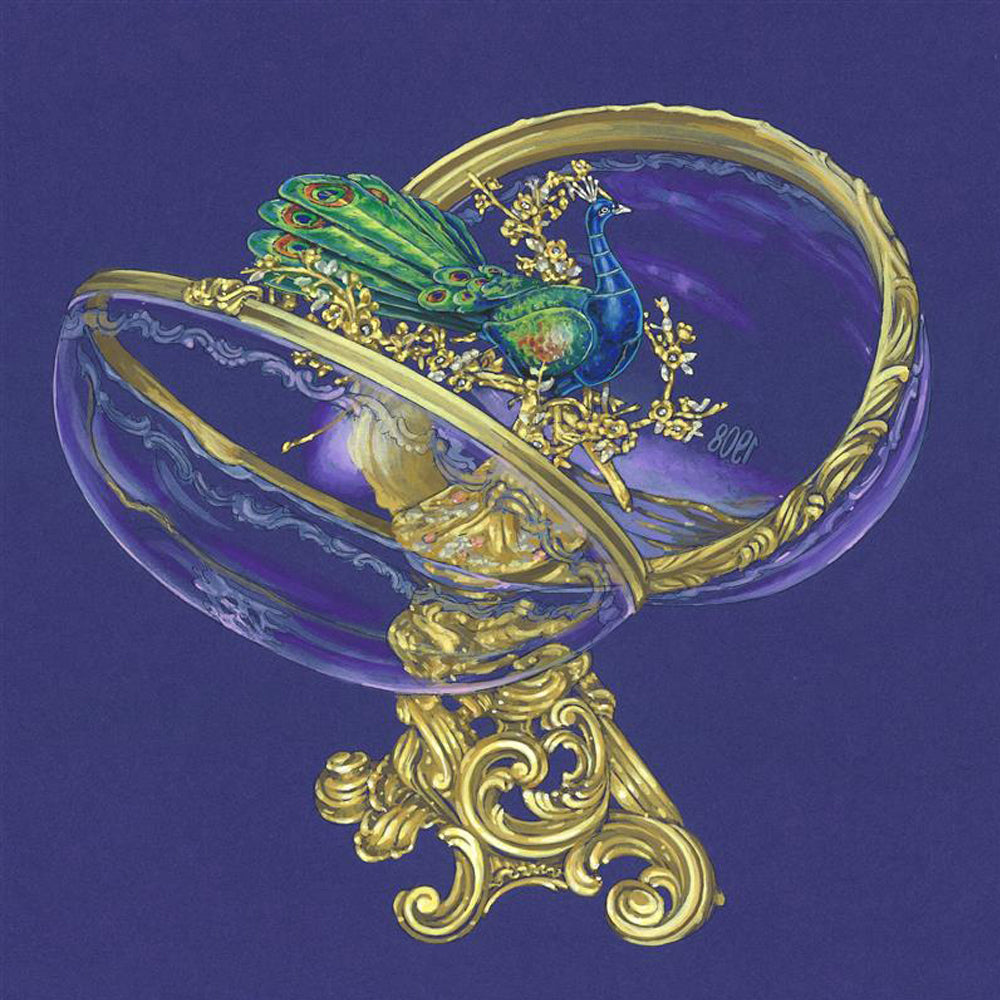
1908
The Peacock Egg
The Peacock Egg features a transparent egg, placed horizontally, both its halves carved from rock crystal, each set into a heavy mount with a clasp. One half is inscribed with the monogram of Maria Fedorovna, the other with the year 1908. Inside, a peacock in multi-color enamel is poised amid the branches of a golden tree, strewn with flowers of precious stones and enamel. The mechanical bird can turn its head and spread its tailfeathers.
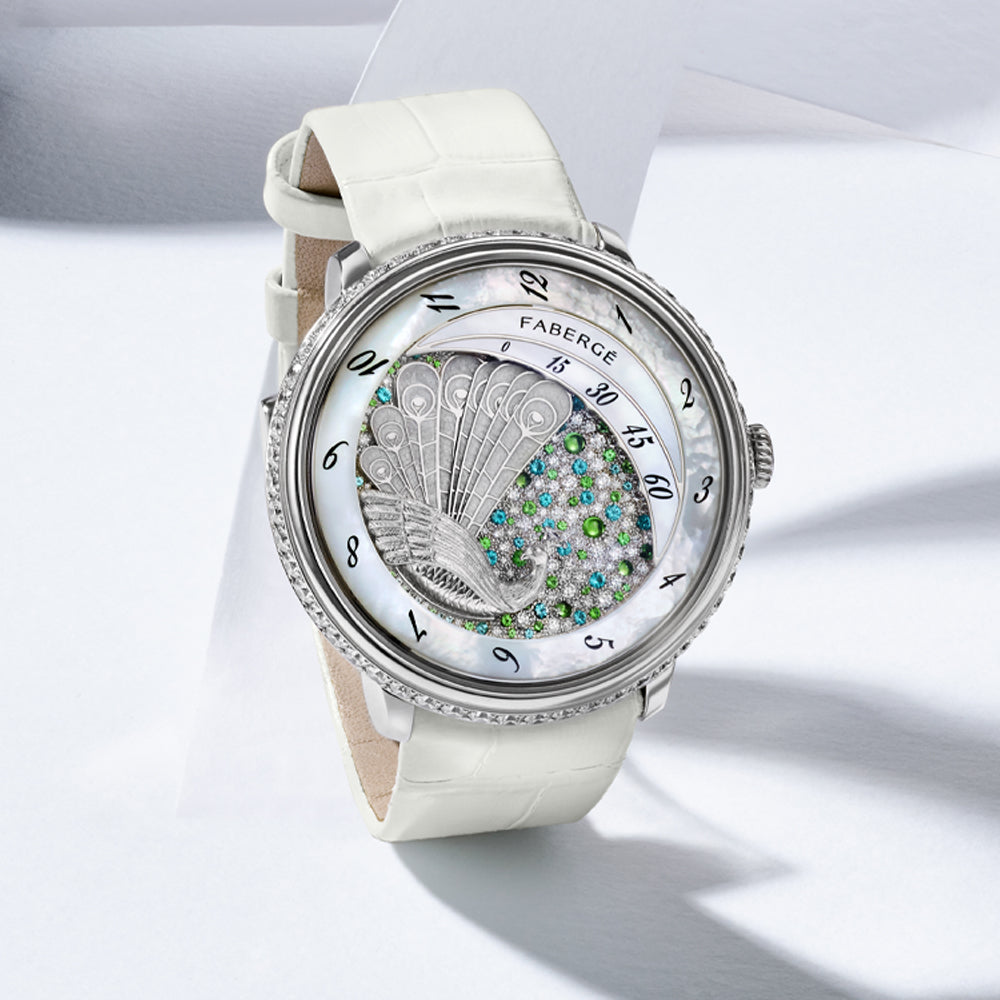
Compliquée
Peacock Watch
The Compliquée Haute Horlogerie collection upholds Peter Carl Fabergé’s tradition of surprise and meticulous execution with a new and spectacular time display, which won the prestigious 2015 Grand Prix d’Horlogerie de Genève (GPHG) – the Swiss watchmaking industry’s highest honour – in the ‘High-Mechanical’ category. The highly original display of the collection features a fan at the heart of the watch, a movement exclusively developed for Fabergé by Agenhor Manufacture. It thus perpetuates the ingenious and freethinking spirit of Peter Carl Fabergé; the display in the Compliquée Peacock timepiece pays homage to the famous “Peacock Egg” of 1908.


















